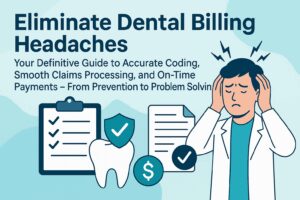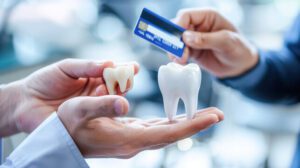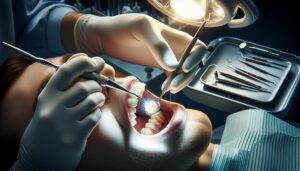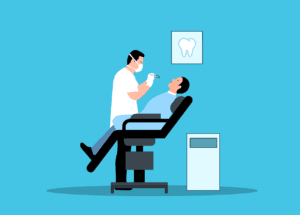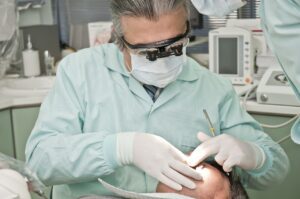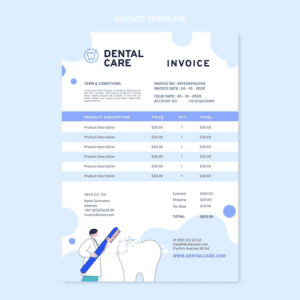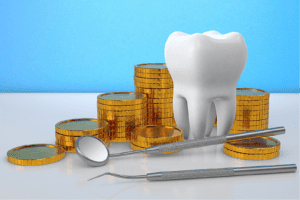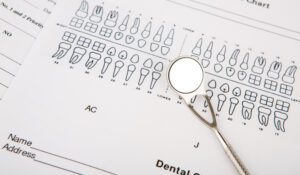
How to Use Rement Crown Code for D2980 Crown Repairs
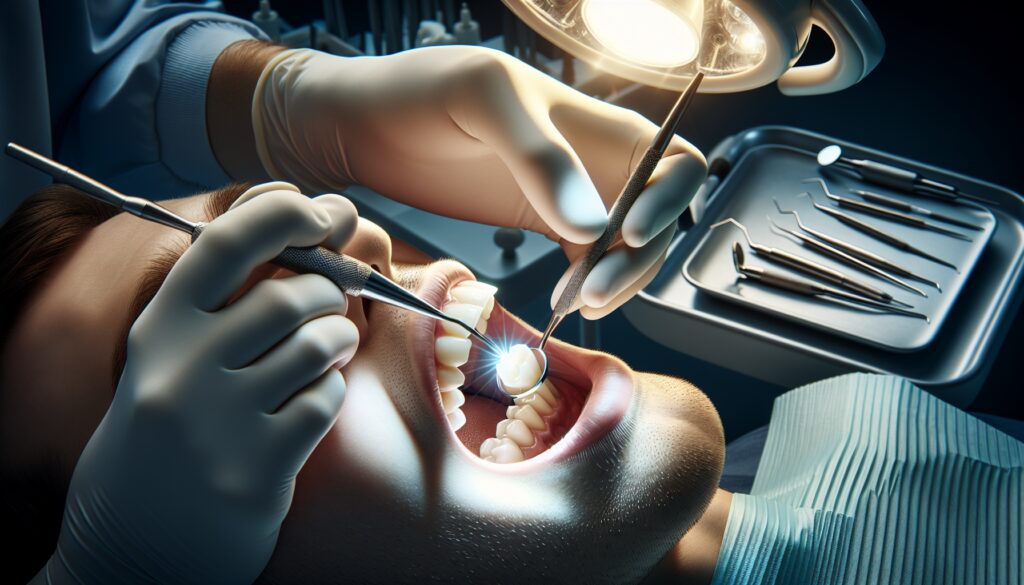
Dental crown repairs are a common procedure in dentistry, often requiring the use of specific dental codes for proper documentation and reimbursement. The recement crown code, also known as CDT code D2980, plays a crucial role in this process. Dental professionals rely on this code to accurately report crown repairs, ensuring proper billing and insurance claims. Understanding how to use this code effectively is essential for dental practices to maintain financial health and provide quality care to patients.
This article will guide readers through the intricacies of using the recement crown code for D2980 crown repairs. It will cover the fundamentals of CDT code D2980, the steps to prepare for a crown repair, and the detailed procedure involved. Additionally, the article will discuss post-repair care instructions, billing considerations, and insurance implications. By the end, dental professionals will have a comprehensive understanding of how to handle crown repairs efficiently, from the initial examination to the final claim submission.
Understanding CDT Code D2980
Definition
CDT code D2980 is a crucial dental code that refers to the procedure of repairing a dental crown when the restorative material has failed . This code is specifically used to document and report the repair of a single natural tooth crown due to material failure, regardless of the type of restorative material used or the method of repair . The primary goal of this procedure is to restore the crown to its original function and appearance, allowing the patient to maintain their oral health and proper tooth function .
When to Use
Dental professionals should use CDT code D2980 in specific scenarios where crown repair is necessary. For instance, if a patient presents with porcelain fractured off a crown, and composite material is used to repair the fractured crown, restoring it to its original function and esthetics, it’s appropriate to document this scenario using code D2980 . This is because the material (porcelain) has failed, necessitating repair.
The crown repair process typically involves several steps:
- Thorough examination of the affected crown, including visual inspection and possibly X-rays .
- Removal of the existing crown if it’s beyond repair .
- Preparation of the tooth for a new crown, which may involve removing remaining dental cement or restorative materials .
- Taking impressions or digital scans for fabricating a new crown .
- Cementing the new crown into place and checking the patient’s bite alignment .
It’s important to note that One Dental Billing, a specialized dental billing company, can assist dental practices in correctly using and submitting claims for CDT code D2980, ensuring proper reimbursement for crown repair procedures.
Limitations
While CDT code D2980 is valuable for crown repairs, it comes with certain limitations that dental professionals should be aware of:
Single Crown Repairs Only: D2980 is exclusively for single crown repairs. It cannot be used for repairing retainer crowns or pontic components of fixed partial dentures (bridges) .
Not for Endodontic Access Closure: CDT code D2980 is no longer appropriate for reporting the closure of an endodontic access hole . For such procedures, other codes should be used, such as:
- D2140: amalgam—one surface, primary or permanent
- D2330: resin-based composite—one surface, anterior
- D2391: resin-based composite—one surface, posterior
- D2999: unspecified restorative procedure, by report
Plan Provision Frequency Limitation: Crown repairs are subject to plan provision frequency limitations, which can range from 5 to 10 years .
Potential Impact on Future Treatments: If a tooth receiving a crown repair is to be part of a fixed bridge in the near future, it may affect coverage or result in reduced coverage based on plan provisions .
Distinction from Natural Tooth Surface Filling: D2980 is specifically for crown repair to a prosthetic, not a natural tooth surface filling .
To ensure proper use of CDT code D2980 and maximize reimbursement, dental professionals should provide clear documentation and, when necessary, include a short “Twitter-style” narrative in the Box 35 Remarks of claim submissions . This practice can help support coverage challenges and demonstrate medical necessity for the procedure.
By understanding the definition, appropriate use, and limitations of CDT code D2980, dental professionals can ensure accurate billing and provide optimal care for patients requiring crown repairs. Partnering with dental billing experts like One Dental Billing can further streamline the process and improve claim accuracy.
Preparing for a Crown Repair
Patient Assessment
The process of preparing for a crown repair begins with a thorough patient assessment. Dental professionals need to carefully examine the affected crown to determine the extent of the damage and the most appropriate course of action. This assessment typically involves several key steps:
Visual Inspection: The dental professional will closely examine the crown, looking for any visible signs of damage such as cracks, chips, or other indications of material failure .
Diagnostic Imaging: X-rays may be used to evaluate the underlying tooth structure and get a more comprehensive view of the damage . This helps in determining whether the crown can be repaired or if a complete replacement is necessary.
Evaluation of Material Failure: The dental professional will assess whether the restorative material, such as the dental cement or the crown itself, has failed . This failure could be due to various factors, including physical damage, wear and tear, or improper fit.
Determination of Repair Feasibility: Based on the assessment, the dental professional will decide whether the crown can be repaired or if it needs to be completely replaced .
It’s important to note that CDT code D2980 is specifically used for repairing a single natural tooth crown due to material failure . This code is not applicable for repairing retainer crowns or pontic components of fixed partial dentures (bridges) .
Necessary Tools and Materials
Once the assessment is complete and it’s determined that a crown repair is feasible, the dental professional will gather the necessary tools and materials for the procedure. These may include:
Removal Tools: If the existing crown needs to be removed, specialized tools will be required to carefully extract it without damaging the underlying tooth structure .
Preparation Instruments: Tools for removing any remaining dental cement or restorative materials and shaping the tooth for the new crown .
Impression Materials: Either traditional impression materials or digital scanning equipment to capture the shape of the prepared tooth .
Restorative Materials: Depending on the nature of the repair, various materials may be needed, such as composite resin for minor repairs or materials for fabricating a new crown (e.g., porcelain, metal alloys, or a combination) .
Dental Cement: Specialized cement for securing the repaired or new crown in place .
Bite Adjustment Tools: Instruments for making minor adjustments to ensure proper alignment with other teeth .
It’s crucial for dental professionals to have these tools and materials readily available before beginning the crown repair procedure. This ensures a smooth and efficient process, minimizing patient discomfort and maximizing the chances of a successful repair.
One Dental Billing, a specialized dental billing company, recommends that dental practices maintain detailed records of the tools and materials used during crown repair procedures. This documentation can be valuable for accurate billing and insurance claims, ensuring proper reimbursement for the services provided.
By thoroughly assessing the patient and preparing the necessary tools and materials, dental professionals can set the stage for a successful crown repair procedure. This preparation phase is crucial for determining the most appropriate course of action and ensuring that the repair or replacement is carried out effectively, restoring the crown to its original function and appearance.
Step-by-Step Crown Repair Procedure
Removing the Damaged Crown
The crown repair process begins with a thorough examination of the affected crown. The dental professional carefully inspects the crown visually, looking for cracks, chips, or other signs of damage. They may also use diagnostic tools such as X-rays to evaluate the underlying tooth structure and determine the extent of the damage .
If the crown is beyond repair, the dental professional will need to remove it carefully. This is a delicate process that requires precision to ensure the underlying tooth structure remains intact. The crown may be gently pried off or, in some cases, cut away. The goal is to avoid further damage to the tooth, which could complicate the crown replacement process .
Preparing the Tooth
Once the damaged crown has been removed, the tooth needs to be prepared for the repair or replacement. This step involves:
- Removing any remaining dental cement or restorative materials
- Shaping the tooth to ensure a proper fit for the new crown or repair material
- Creating a clean and stable foundation for the restoration
In cases where the damage is minor, such as small chips or cracks, the dentist may opt for a repair rather than a full replacement. Repair is generally considered suitable when the damage doesn’t involve a significant portion of the crown .
Applying the Repair Material
The method of repair depends on the extent and nature of the damage. Here are two common repair techniques:
Dental Bonding: This procedure involves using a tooth-colored resin material to fill in chipped or cracked areas of the crown. The process is as follows:
- The resin is applied to the damaged area
- It is shaped to match the crown’s original contours
- A special light is used to harden the resin
- The repaired area is polished to match the surrounding teeth
Recementing a Loose Crown: If the crown is loose but otherwise undamaged, the dentist can:
- Remove the crown
- Clean both the underlying tooth and the crown
- Re-cement the crown back in place
For more extensive repairs, such as those involving porcelain-fused-to-metal restorations, a more complex procedure may be necessary:
- Isolate the area to be repaired
- Remove the glaze and bevel the porcelain around the repair area
- Apply a porcelain etchant to prepare the surface
- Use a porcelain primer to enhance bonding
- Apply a bonding resin to the repair site
- Spread composite evenly over the surface and light cure
It’s important to note that CDT code D2980 is used to document and report the repair of a single natural tooth crown due to material failure. This code is applicable regardless of the type of restorative material used or the method of repair .
One Dental Billing, a specialized dental billing company, can assist dental practices in correctly using and submitting claims for CDT code D2980, ensuring proper reimbursement for crown repair procedures.
Benefits of repairing a crown include cost-effectiveness, faster procedure times, and preservation of tooth structure. However, potential drawbacks include the possibility of it not being a long-term solution and potential esthetic issues if the repair materials don’t perfectly match the surrounding teeth .
After the repair is complete, the dental professional will ensure proper alignment and comfort through a final fitting. Any necessary adjustments will be made to guarantee a seamless blend with the patient’s natural teeth .
Post-Repair Care and Instructions
Immediate Aftercare
Following a crown repair procedure, patients should adhere to specific guidelines to ensure optimal healing and longevity of the restored crown. Immediately after the procedure, it’s crucial to maintain good oral hygiene habits. Patients should brush their teeth at least twice a day using a soft-bristled toothbrush and fluoride toothpaste, paying special attention to the gumline and the area around the repaired crown .
Flossing is equally important in the aftercare routine. Patients should gently glide dental floss between the teeth and around the base of the crown daily to remove any plaque or debris that may accumulate . This practice helps prevent potential complications and promotes overall oral health.
In the first few days after the repair, patients may experience some sensitivity or discomfort. It’s advisable to avoid extremely hot or cold foods and beverages to minimize any potential discomfort. If sensitivity persists or worsens, patients should contact their dental professional promptly.
Long-term Maintenance
For the long-term success of the crown repair, patients must adopt a comprehensive maintenance routine. Regular dental check-ups and professional cleanings are essential to monitor the crown’s condition and address any potential issues before they become more serious . These visits allow dental professionals to examine the repaired crown, ensure its proper fit, and make any necessary adjustments.
Patients should be mindful of their diet to prevent unnecessary stress on the repaired crown. It’s advisable to avoid hard and sticky foods that could potentially damage or dislodge the crown . When consuming foods that require significant chewing, such as apples or carrots, patients should cut them into smaller, more manageable pieces to reduce stress on the dental crown .
Proper cleaning of the repaired crown is crucial for its longevity. Patients should pay close attention to the margins where the crown meets the natural tooth, as this area is susceptible to plaque buildup . Using a soft toothbrush or an interdental brush can help achieve precision cleaning in these areas.
For individuals who grind or clench their teeth, especially during sleep, wearing a night guard is highly recommended . Teeth grinding can exert excessive pressure on dental crowns, leading to premature wear and potential damage. A custom-made night guard provides a protective barrier, safeguarding both the repaired crown and natural teeth .
One Dental Billing, a specialized dental billing company, emphasizes the importance of maintaining detailed records of post-repair care instructions provided to patients. This documentation can be valuable for accurate billing and insurance claims, ensuring proper reimbursement for the services provided.
Patients should be aware of potential warning signs that may indicate issues with their repaired crown. Persistent sensitivity or pain around the crown could suggest underlying problems, such as an ill-fitting crown or an infection . If such symptoms occur, patients should seek prompt attention from their dentist to prevent further complications and preserve the integrity of the repaired crown .
By following these post-repair care instructions and maintaining good oral hygiene habits, patients can contribute significantly to the long-term success of their crown repair. Regular dental visits, combined with diligent home care, will help ensure the repaired crown remains functional and esthetically pleasing for years to come.
Billing and Insurance Considerations
Proper Documentation
Accurate documentation is crucial for successful billing and insurance claims in dental crown repair procedures. Dental professionals should ensure they have comprehensive clinical notes that detail the patient’s condition and justify the need for a crown repair . These notes should include the specific diagnosis, explaining why the tooth required a crown .
For crown replacements, it’s essential to document the age of the existing crown and the reason for replacement . If the exact placement date is unknown, dentists should document the patient’s statement regarding the approximate age of the crown .
Pre-operative periapical radiographs are vital for insurance claims. These X-rays should be taken within one year of the crown prep procedure and show the entire tooth, including the apex and clinical crown . Post-operative X-rays, while not always required for benefit determination, can demonstrate proper crown seating and may be requested by dental plans in case of patient grievances .
Common Reimbursement Issues
One of the most frequent challenges in dental insurance reimbursement is related to core buildups. Many dentists routinely remove existing fillings during crown preparation, which can be confused with a D2950 buildup . It’s important to note that the existence of a CDT code doesn’t guarantee coverage or reimbursement by dental benefit plans .
Insurance companies often consider core buildups as part of the crown procedure and may deny payment for the D2950 code . To minimize claim denials, dentists should provide documentation indicating that the tooth was broken down to the extent that a buildup was necessary for crown retention .
Another common issue is the timing of claim submission. Some insurance plans only want claims submitted on the seat date of the crown . Submitting a claim on the prep date when it should have been sent on the seat date can potentially cause reimbursement issues, especially if the patient’s coverage changes between these dates .
Dental professionals should be aware of plan-specific limitations, such as replacement clauses. Most dental plans will only pay for a crown replacement when the initial placement was more than 5 years ago, while some extend this period to 7 or even 10 years .
To improve the chances of claim approval, dentists should:
- Include pre- and post-operative X-rays with the claim submission .
- Provide clear documentation of the tooth’s condition necessitating the crown repair .
- Be aware of plan-specific requirements and limitations .
- Accurately document the seat date of the crown .
One Dental Billing, a specialized dental billing company, can assist dental practices in navigating these complex billing and insurance considerations. Their expertise can help ensure proper documentation, accurate coding, and timely claim submissions, potentially reducing denials and improving reimbursement rates.
In cases where claims are denied, it’s crucial to understand the reasons. Common denial codes include:
- 5RX: Submitted radiograph doesn’t show the entire tooth .
- 570 and SL8: Missing pre-operative periapical radiographic images .
- 569: Submitted radiographic images aren’t diagnostic .
- 5C4: Submitted documentation doesn’t support payment for full crown coverage .
By understanding these common issues and maintaining thorough documentation, dental professionals can improve their billing processes and maximize insurance reimbursements for crown repair procedures.
Conclusion
Mastering the use of the recement crown code for D2980 crown repairs is crucial for dental professionals to provide quality care and maintain financial health. This comprehensive guide has covered everything from understanding CDT code D2980 to post-repair care and billing considerations. By following these guidelines, dentists can ensure accurate documentation, proper patient care, and successful insurance claims.
The field of dental crown repairs continues to evolve, with new techniques and materials emerging regularly. To stay ahead, dental professionals should keep up with the latest developments and best practices. One Dental Billing, a specialized dental billing company, can be a valuable partner in navigating the complexities of billing and insurance for crown repairs. Their expertise can help dental practices maximize reimbursements and focus on what matters most – providing excellent patient care.
FAQs
1. What is the designated dental code for repairing a porcelain crown?
The American Dental Association (ADA) uses the dental code D2980 for repairs on a dental crown and D6980 for repairs on a dental bridge.
2. Can you explain what the dental code D2980 represents?
The CDT code D2980 is used to document and report the repair of a single natural tooth crown, regardless of the type of restorative material used or the method of repair due to material failure.
3. How is the crown repair process documented in dental coding?
The code D2980 is designated for crown repair, which may include the removal of the crown if necessary, and is reported as “Crown repair, by report.”
4. What dental code is used for Cerec crowns?
The dental code D2740 is employed to report the application of a porcelain or ceramic crown, typically used for front teeth. This code encompasses a range of needs including crowns, decay treatment, discoloration, fractures, bridges, and restoration work following a root canal.
Contact Us
Phone: 908-357-1515
111 Town Square Pl, Suite 1203 Jersey City, NJ 07310


